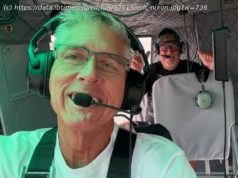Companies such as Bioness, Cefaly and Sana are developing technology to reduce pain — and the need for addictive painkillers.
In 1992, doctors told Sana Health founder and CEO Richard Hanbury that he had just five years to live.
A Jeep accident in Yemen at age 19 left him in a wheelchair and in such intense pain that he was rarely able to sleep, he recalls. Prescription drugs, even morphine, lost their effectiveness and the chronic pain from nerve damage only got worse, to the point that it threatened to kill him.
It was a 1990’s movie — « Hudson Hawk » — that led Hanbury to develop a cure. In the film, Hawk, played by Bruce Willis, is just out of prison and gets pulled back into a series of heists, including stealing famous works of art.
« Bruce Willis did literally save my life with that film, » Hanbury said in an interview. « The film went from good and bad to good and bad the whole way through. As I was watching, I realized that had changed my pain levels more than morphine. That’s where the whole idea of using a visual stimulus to create a different state of consciousness came from. »
Hanbury created Sana. The company now makes a mask that users wear over their eyes for 15 minutes before bed, or in 15 minute intervals throughout the day as needed, to put them into a relaxed, lower-pain state. The Sana mask measures minute changes between each heartbeat, and administers precisely timed pulses of light and sound to stimulate the audio and visual cortex of the user’s brain.
Some 50 million people in the U. S. experience chronic pain daily or almost daily. But Sana is also attacking the crisis caused by opioids, which many people turned to for help in dealing with their pain. That led to an addiction epidemic that’s now killing 130 Americans every day from overdoses, according to estimates from the Centers for Disease Control and Prevention.






